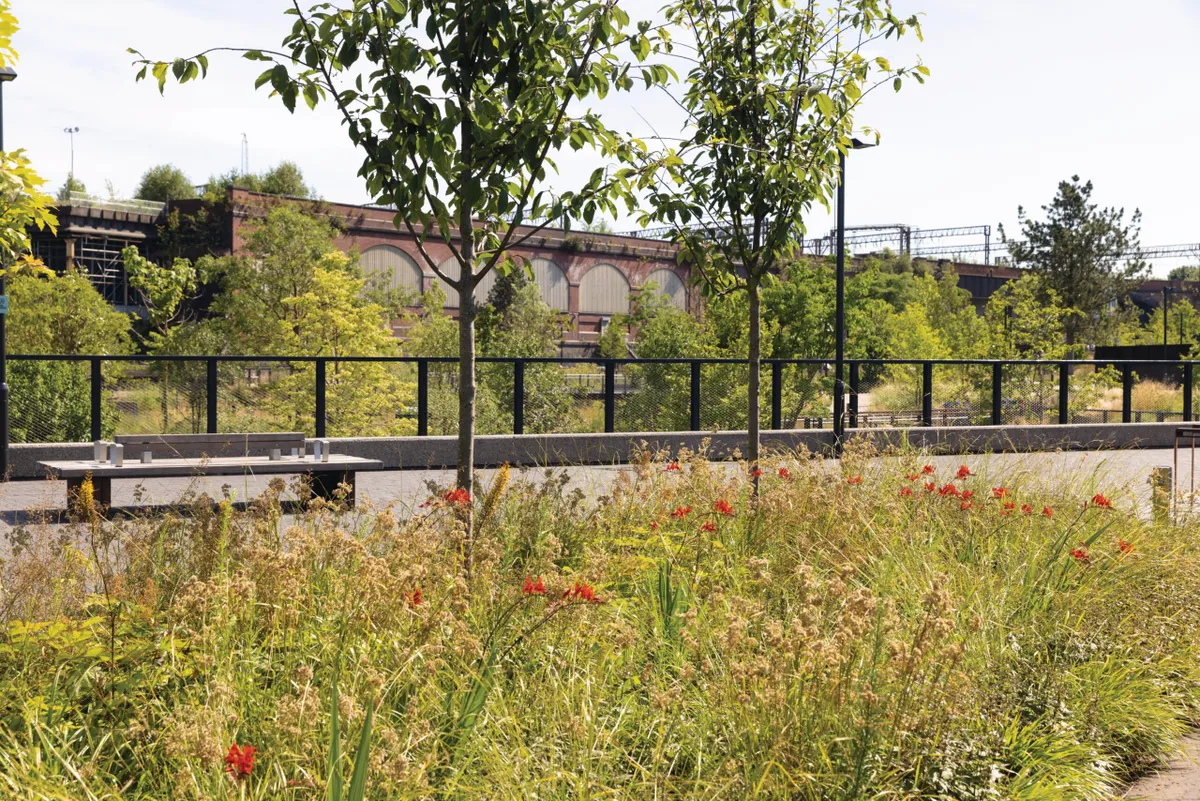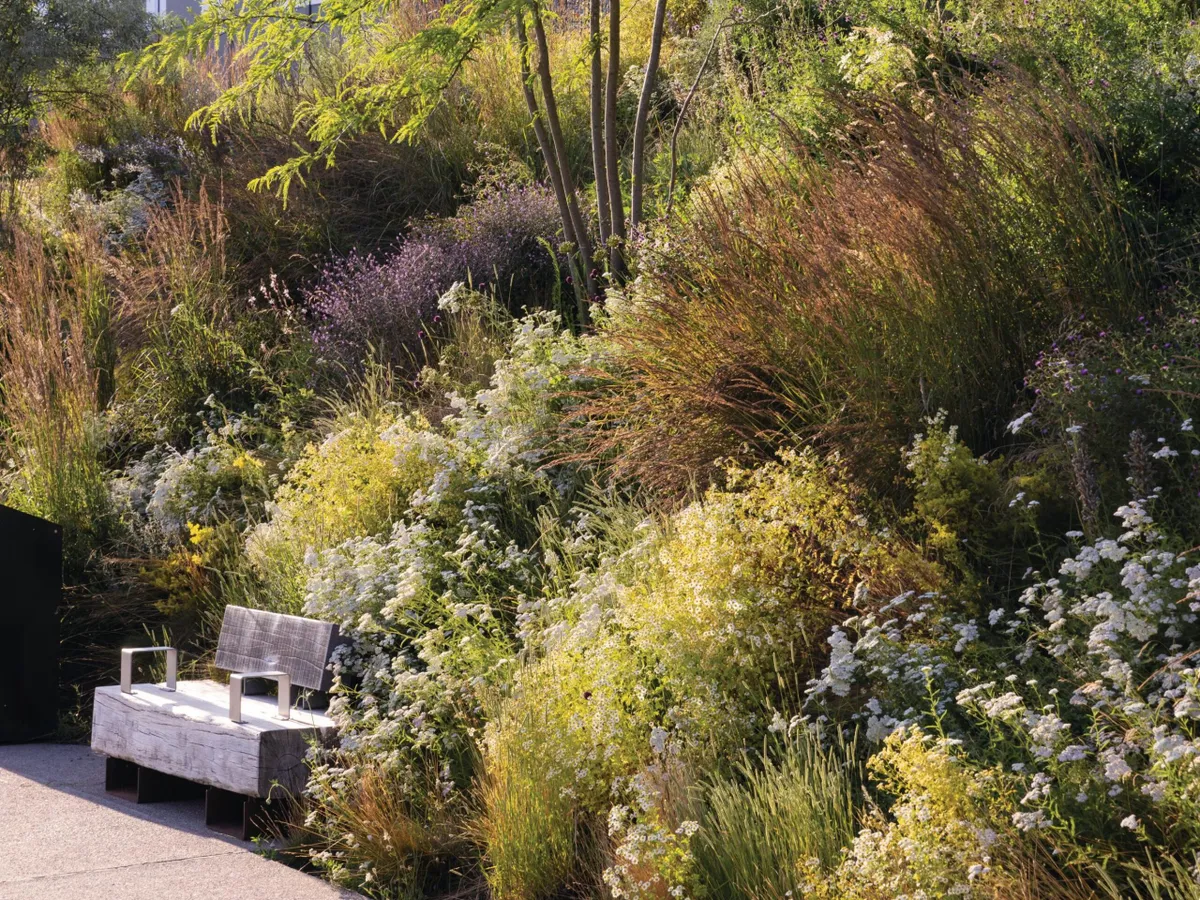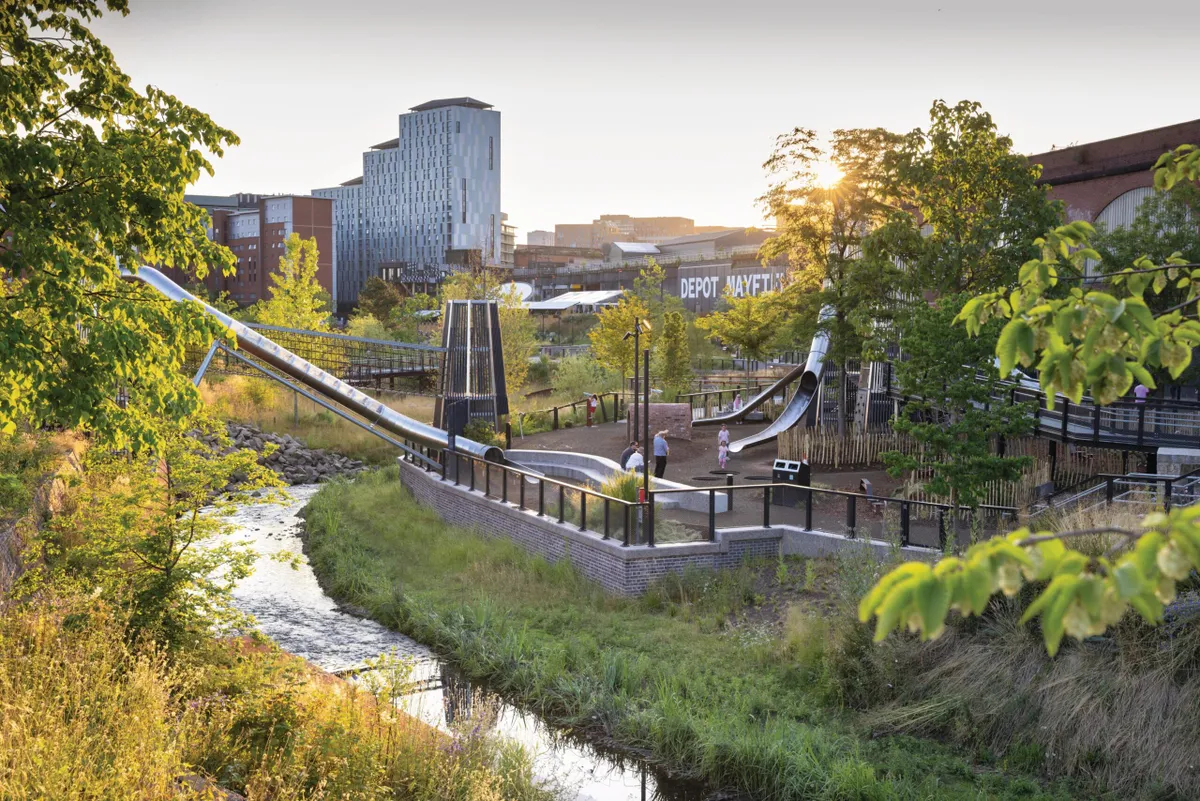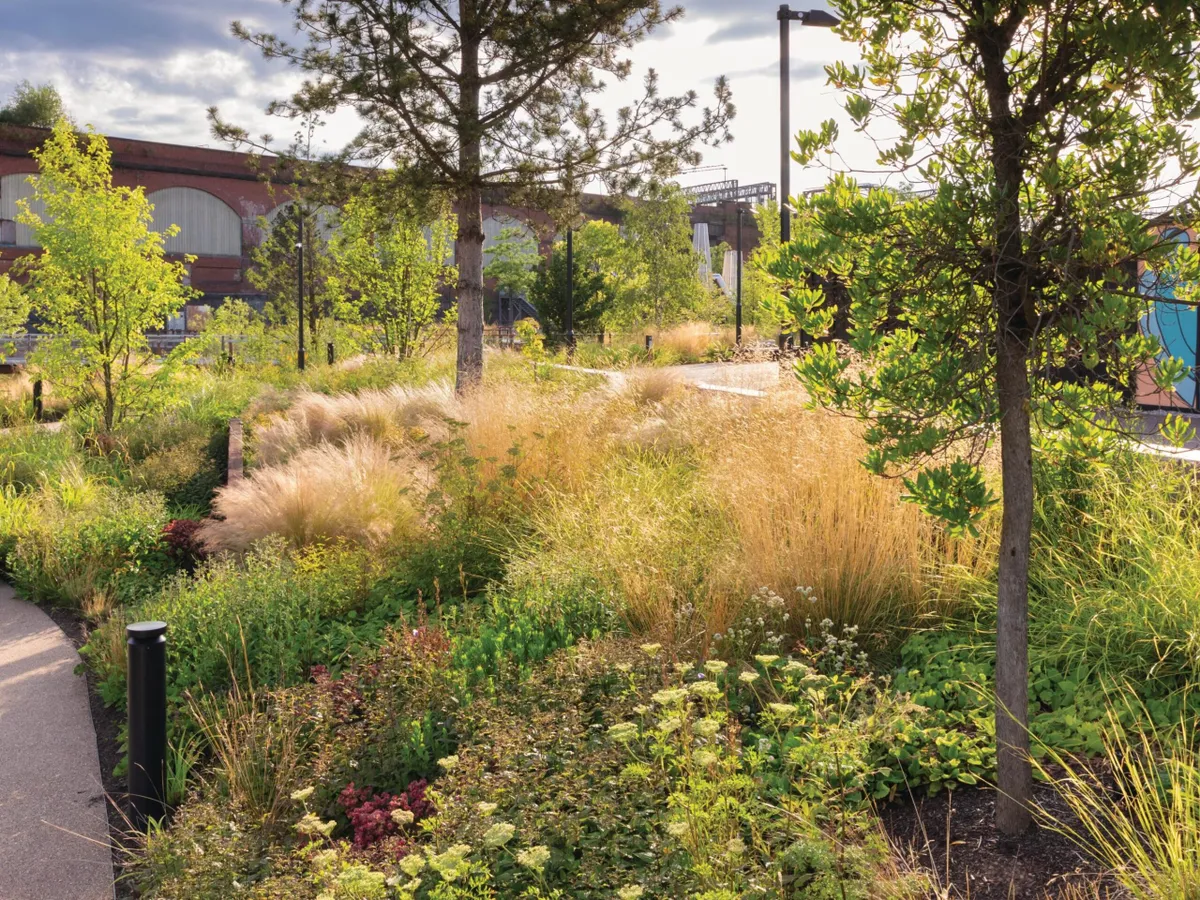Manchester is proud of its industrial heritage, but the city looks towards the future as well as honouring its history. It has a target of reaching carbon zero by 2038, 12 years earlier than the national target, and in 2019 the city declared a climate emergency.
You may also like
- Sign up to our Chelsea Flower Show newsletter
- RHS announces new urban show in Manchester
- Garden shows and events for 2024
So when plans were made to develop Mayfield, an abandoned industrial hub where dye works and breweries once flourished, it was clear that it needed to reflect this dual character that is uniquely Mancunian. Over the next few years, this district near Manchester Piccadilly Station is set to be rejuvenated as part of the Mayfield Partnership, a public-private collaboration between several organisations including Manchester City Council and regeneration specialists LandsecU+I.

What makes this development stand out, and something that could create a blueprint for developments further afield, is the fact that the landscape was prioritised and built first. The six-and-a-half-acre Mayfield Park opened its gates in September 2022 as the city’s first newly built city-centre park in a century.
Duncan Paybody from Studio Egret West, who led the landscape team that designed the park, says that when they first visited the site, they found an old station on top of a depot building. “The track beds were flourishing with buddleja and all these self-seeded species. There was a really strong sense of the past with these rusty beams and old railway tracks, but nature was finding its way and starting to take over the site,” he says. “In our eyes, it was already really beautiful, and it had something that Manchester is severely lacking in the city centre – open sky and nature. We saw the potential.”

The River Medlock is the focal point that ties the park together. Previously, it was largely covered by concrete culverts; stagnant and filled with everything from car batteries to toilet seats. Now, it’s more in keeping with its name, which means ‘meadow stream.’ In heavy rainfall, the river floods into the lower levels of the park, where bridges and jetties allow visitors to observe the new habitats that are now home to ducks, geese, herons and brown trout.
“Below a certain level in the park, the planting is more for wildlife than it is for people,” says Duncan. “It’s about creating habitat, and anything within the river corridor is also designed to deal with fluctuations.” The team worked closely with the Environment Agency on this area to create a resilient base that is made up of native plants and wildflower turf.

On the upper levels, planting beds are more curated and created with human visitors in mind. Early in the season, the flowers of Cornus mas and the stems of willow bring pops of yellow to the space, alongside euphorbias and primroses. These give way to purple tones that carry through the summer season and into autumn.
“At the entrances, we focused on having really strong splashes of colour,” explains Duncan. “In May, the salvias come through. The site was synonymous with dye works, so the planting here evokes spills of ink. We bookend the season with asters, partly because they are great for extending seasonal colour, but also because they were already self-seeding around the site.”

The south-facing bank that backs on to the Depot Mayfield building, which this month plays host to the inaugural RHS Urban Show, is planted to emulate railway embankments. “Here we’ve got a Mediterranean mix of things,” says Duncan. “Verbena officinalis ‘Bampton’ has been a star of the show, creating a dome-like cloud of purple.” Calamagrostis x acutiflora ‘Karl Foerster’ provides structure, alongside Daucus carota, Galium verum and Linaria vulgaris.

To root the development to its past, the team wanted to reuse as much material as they could from what they found on site. The retaining walls along the sides of the river were kept, with their patchwork of brick and stone harking back to all the factories that have come and gone here since the 18th century.

Cast-iron hog-back beams are repurposed as bridges and sculptural elements in borders; an old fire escape from a derelict factory creates a walkway across one bed. Everything about the design of Mayfield Park serves to help it harmonise with the people and animals that will use it, while maintaining its Mancunian sense of place. It is a unique development that will continue to evolve, and while the project embraces Manchester’s heritage, Duncan says it also plays to the city’s future, “which should be far greener, and far more biodiverse”.
Designing for kids
- At the far end of the park, the team created a sizeable play area. “We found that in a lot of playgrounds, you get this sort of dumbed down approach in terms of planting, and it’s just a bright-coloured surface, devoid of trees and planting, with lots of play equipment,” says Duncan. “We didn’t want to do that. We introduced quite a lot of planting into the play area. If you walk around the park and you haven’t got kids, it’s still interesting to look at.”
- There have been lessons learned from the experience, however. “A lot of the lower-level planting has failed because the kids are basically trashing it. We were a little naïve in terms of thinking that if we create a lot of routes, kids will stick to those routes. When I went with my own kids, even I found myself standing on top of a planting bed.” Duncan is still pleased that they incorporated lots of planting into the play area. “We want it to still feel very much like a part of the park.”
- Keeping things local was also important, so the striking metal equipment, which echoes industrial chimneys and beams, was built by Stockport-based Massey & Harris, including a slide that crosses the river. Brick tunnels link the space to the surrounding railway arches, and trees planted within the playground will grow to form a large canopy, further linking the area to the surrounding park. “The play area has been a huge success,” says Duncan. “There was such a pent-up demand for a space like this.”
- Throughout the park, the team planted a wide range of trees including Arbutus unedo, Amelanchier x grandiflora ‘Robin Hill’ and Gleditsia triacanthos, alongside more traditional city park trees such as Quercus robur and Platanus x hispanica. “We didn’t want any trees in lines; we wanted them in random groups,” says Duncan. “We purposely picked a variety of species and forms. Typically, in city centres you find trees planted in grids resembling lollipops. We’ve done the opposite of that to create a totally different space.”
USEFUL INFORMATION
Find out more about Duncan Paybody’s work at studioegretwest.com and more about the park at mayfieldmanchester.co.uk




